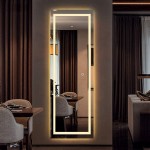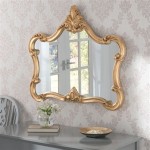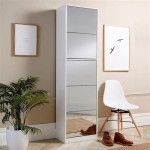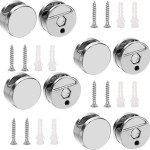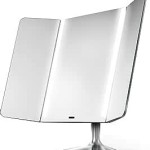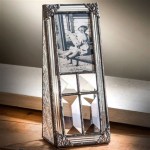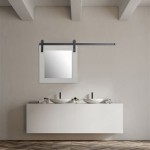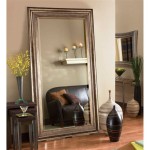Mirror Interior Design Ideas
Mirrors have long been a staple in interior design, serving both practical and aesthetic purposes. Their ability to reflect light, create illusions of space, and add a touch of elegance makes them a versatile design element. Incorporating mirrors strategically can transform any room, enhancing its natural light, visually expanding its boundaries, and elevating its overall aesthetic appeal. This article explores creative ways to utilize mirrors in interior design, highlighting their multifaceted benefits and offering practical tips for seamless integration into different spaces.
Enhancing Natural Light and Space
Mirrors excel at maximizing natural light, a crucial aspect of creating inviting and comfortable interiors. By strategically placing mirrors to reflect sunlight, rooms can feel brighter and more expansive, even in spaces with limited natural light. A large mirror positioned opposite a window acts as a light multiplier, bouncing sunlight further into the room and illuminating dark corners. When strategically placed, mirrors can create the illusion of more space, effectively expanding the perceived size of a room. In smaller spaces, a strategically placed mirror can create the illusion of depth, making the room appear larger than it actually is. For instance, a floor-length mirror placed on a narrow wall can create a sense of infinite space, while a mirror mounted above a console table can open up the room and make it appear more welcoming.
Elevating Style and Aesthetics
Mirrors add an element of sophistication and style to any interior design scheme. They can be used to create focal points, draw attention to specific features, and add a touch of glamour to the overall aesthetic. A large, ornate mirror can be a statement piece, serving as a focal point in a room, while smaller, decorative mirrors can be used to add accents and visual interest. Mirrors with decorative frames can add a touch of personality and elegance to a space, while contemporary mirrors with sleek, minimalist frames can complement modern interiors. The choice of frame design should complement the overall style of the room, creating a cohesive and harmonious aesthetic.
Practical Considerations for Mirror Placement
When incorporating mirrors into an interior design scheme, it's important to consider practical factors to ensure their effectiveness and safety. Choosing the right type of mirror for a particular space is essential. For bathrooms, moisture-resistant mirrors are ideal, while for hallways and entryways, durable and shatterproof mirrors are recommended. Prioritizing safety is paramount, particularly with mirrors that are placed in high-traffic areas or where young children are present. A well-secured mirror will not only prevent accidents but also ensure its longevity. The placement of mirrors should be thoughtfully considered. Ideally, mirrors should be positioned to reflect positive aspects of the room while minimizing reflections of unattractive views. Consider the angle and height of the mirror to create a balanced and visually appealing composition.
Integrating Mirrors into Various Spaces
The versatility of mirrors makes them suitable for various interior design applications. In living rooms, a large mirror above the fireplace or behind a sofa can create a sense of grandeur and openness. In bedrooms, placing a mirror opposite a window can enhance natural light and create a more spacious feel. Mirrored accent walls can add a touch of glamour and sophistication to a dining room or entryway. In bathrooms, mirrors are essential for practical use and can be incorporated into vanity areas, showers, and even ceilings for a unique and luxurious touch. In hallways, mirrors can help to make narrow spaces appear wider and brighter. By strategically placing mirrors in different locations, you can enhance the natural light, visualize space, and create a more inviting and stylish atmosphere.
Conclusion
Mirrors are a versatile design element that can transform the look and feel of any space. Their ability to reflect light, create illusions of space, and add a touch of elegance makes them a valuable tool for interior design. By incorporating mirrors strategically, designers can maximize natural light, visually expand boundaries, and elevate the overall aesthetic appeal of a room. Whether used to create focal points, enhance space, or simply add a touch of glamour, mirrors offer a multitude of ways to enhance the beauty and functionality of any home.

Designer Mirror Ideas For Living Rooms Reflecting Elegance

Mirror Decoration For Home 15 Ideas To Decorate With Mirrors

12 Ideas To Style With Mirrors Interior Mirror Designs Luxdeco

Rectangular Mirror Design Ideas For Your Home Designcafe

15 Living Room Mirror Designs Placement Type Size

Wall Mirror Decorating Ideas To Enhance Your Home Decor

5 Decorating Ideas With Mirrors Advice Lamps Plus

25 Wall Mirror Decorating Ideas That Will Enhance Your Home Decor

100 Home Decor Ideas The Ultimate Inspiration For Interior Designers

Stylish Mirror Wall Decoration Designs For Your Home

